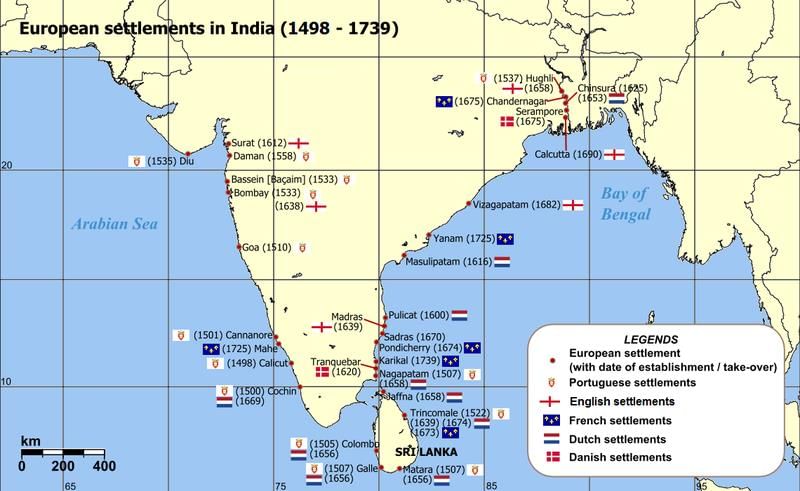UPSC EPFO Mock Test - 10 - UPSC MCQ
30 Questions MCQ Test - UPSC EPFO Mock Test - 10
Which of the following statements is true regarding a whip?
- The whip can recommend actions against a member for defection.
- The whip has the power to expel a member of the House in case of defection.
Consider the following statements
1. In order to safeguard the interests of the STs more effectively, it was proposed to set up a separate National Commission for STs by bifurcat-ning the existing combined National Commission for SCs and STs
2. This was done by passing the 65th Constitutional Amendment Act of 2003'
3. This Act further amended Article 338 and inserted a new Article 338-A in the Constitution Which of these statements is/are correct?
| 1 Crore+ students have signed up on EduRev. Have you? Download the App |
Who among the following European forced to sell all their settlements in India to the British?
Consider the following statements regarding Chikungunya.
- Chikungunya was first discovered in Tanzania in the 1950s.
- Tropical regions currently see the highest rates of the chikungunya virus.
- Asian tiger mosquito also transmits the chikungunya virus.
How many of the above statements are correct?
Consider the following statements regarding the difference between asteroids and comets?
- Asteroids are small rocky planetoids, while comets are formed of frozen gases held together by rocky and metallic material.
- Comets show a perceptible glowing tail, while asteroids do not.
- Asteroids are found mostly between the orbits of Jupiter and Mars, while comets are found only between Venus and Mercury.
How many of the above statements are correct?
In which of the following institutions Central Government prefers to place the labour policies for consultation?
Consider the following statements:
- The Director of Central Bureau of Investigation as Inspector-General of Police, Delhi Special Police Establishment, is responsible for the administration of the organisation.
- With the enactment of CVC Act, 2003, the superintendence of Delhi Special Police Establishment vests with the Central Government save investigations of offences under the Prevention of Corruption Act, 1988, in which, the superintendence vests with the Central Vigilance Commission.
Which of the statements given above is/are correct?
Recombinant DNA technology (Genetic Engineering) allows genes to be transferred
- Across different species of plants.
- From microorganisms to higher organisms.
- From animals to plants.
How many of the above statements are correct?
Cloves, used as a spice, are derived from which of the following plant parts?
Instructions: In each question below a sentence broken into five or six parts. Join these parts to make a meaningful sentence. The correct order of parts is the answer.
Q.
1. left
2. the
3. house
4. he
5. suddenly
_______ is the maximum length of DOS command using an optional parameter.
Consider the following states.
- The Union and State governments concurrently levy GST on commodities with 50% as Central GST (CGST) and 50% as State GST (SGST).
- In India, the Union government has exclusive power to levy excise duty on petroleum products.
- In India, the States have exclusive power to levy excise duty and sales tax on liquor.
How many of the above statements are correct?
Which of the following is not a valid version of MS Office?
The grocer
P: did not listen to the protests of customer
Q: who was in the habit of weighing less
R: whom he had cheated
S: with great audacity
The Proper sequence should be:
Consider the following statements.
1. The American Vice President succeeds to the presidency when it falls vacant, and remains President for the unexpired term of his predecessor.
2. The Indian Vice-President, on the other hand, does not assume the office of the President when it falls vacant for the unexpired term.
Which of these statements is/are correct?
Which of the following are the features of Indicative planning?
1. It is followed by socialist economies.
2. It replaces the price system and works through the market.
3. Qualitative targets of growth are set up.
Choose from the following options.
Which of the following prohibits formation or continuance of company unions?
Which statement is not correct in the context of Article 75(3)?
The average score of a cricket player after 48 innings is 49 and in the 49th innings the player scores 98 runs. In the 50th innings the minimum number of runs required to increase his average score by 2 than it was before the 50th innings?
Arun will be half as old as Lilly in 3 years. Arun will also be one-third as old as James in 5 years. If James is 15 years older than Lilly, how old is Arun?
The Origin, growth and development of employment’s organizations in India can be identified as:
Arrange the subsidized states chronologically under the subsidiary Alliance of Wellesley?
1. Hyderabad
2. Peshwa
3. Jaipur
4. Bharatpur
From the following details find out credit sales during the financial year 2010-2011:
1. Opening balance of sundry debtors on 1.4.10 Rs. 12,000.
2. Bills receivable accepted by customer Rs. 13,000
3. Closing balance of Sundry Debtors on 31.3.11 Rs. 14,000.
4. Cash received from debtors during the year Rs. 38,400
Which of the following is not a Legislative power of Governor?
In which year the formation of the National Renewal Fund to protect the interest of the workers was announced:


















